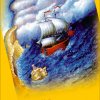Now is the Time is a 10-minute documentary dedicated to Mirko Vukelic as he presents his views on transferring the remains of the late King Peter and Prince Andrej of the Kingdom of Yugoslavia to Oplenac, Serbia for burial. In the Oplenac Church, lie six generations of the Karadjordjevic Dynasty.
Now is the Time (Сада је време) - десетоминутни документарни филм посвећен Мирку Вукелићу и његовом виђењу иницијативе да се изврши пренос земних остатака покојног краља Краљевине Југославије Петра Другог Карађорђевића и краљевића Андреја Карађорђевића у Србију како би били сахрањени у цркви на Опленцу у којој почива шест генерација династије Карађорђевић.
Now is the Time (Sada je vreme) - desetominutni dokumentarni film posvećen Mirku Vukelicu i njegovom vidjenju inicijative da se izvrsi prenos zemnih ostataka pokojnog kralja Kraljevine Jugoslavije Petra Drugog Karadjordjevića i kraljevića Andreja Karadjordjevića u Srbiju kako bi bili sahranjeni u crkvi na Oplencu u kojoj počiva šest generacija dinastije Karadjordjević.
"Bravo to documentary filmmaker Mirko Popadic and MIR Productions and his father-in-law Mirko Vukelic for producing this beautiful tribute to Serbian royalty buried on American soil. I have to admit that I would like the gravesites of King Peter II (St. Sava Monastery in Libertyville, IL) and Prince Andrej Karageorgevich (New Gracanica Monastery, Third Lake, IL) to remain here in the Chicago area, however I completely understand the desire of Serbian Orthodox patriots to have them returned to their homeland. This labor of love - "Now Is the Time (Sada je vreme)", began years ago and I'm so pleased that Mirko Vukelic, a WWII veteran and Serb patriot loyal to General Draza Mihailovich, has lived to see its completion.
Congratulations on a job beautifully done! This is not only a lovely tribute but an important archival contribution of compelling Serbian history that remains unfinished to this day."
Aleksandra Rebic




